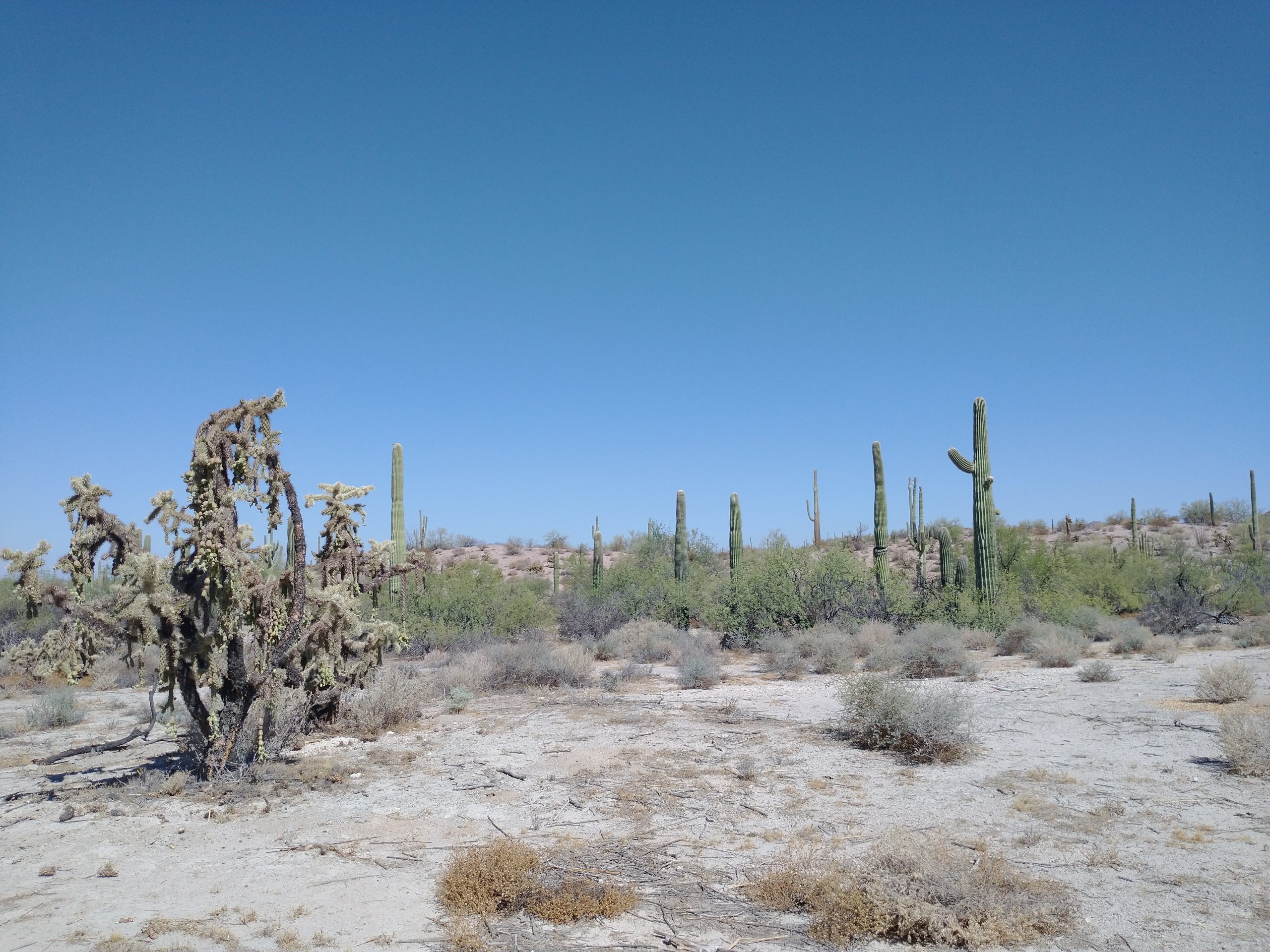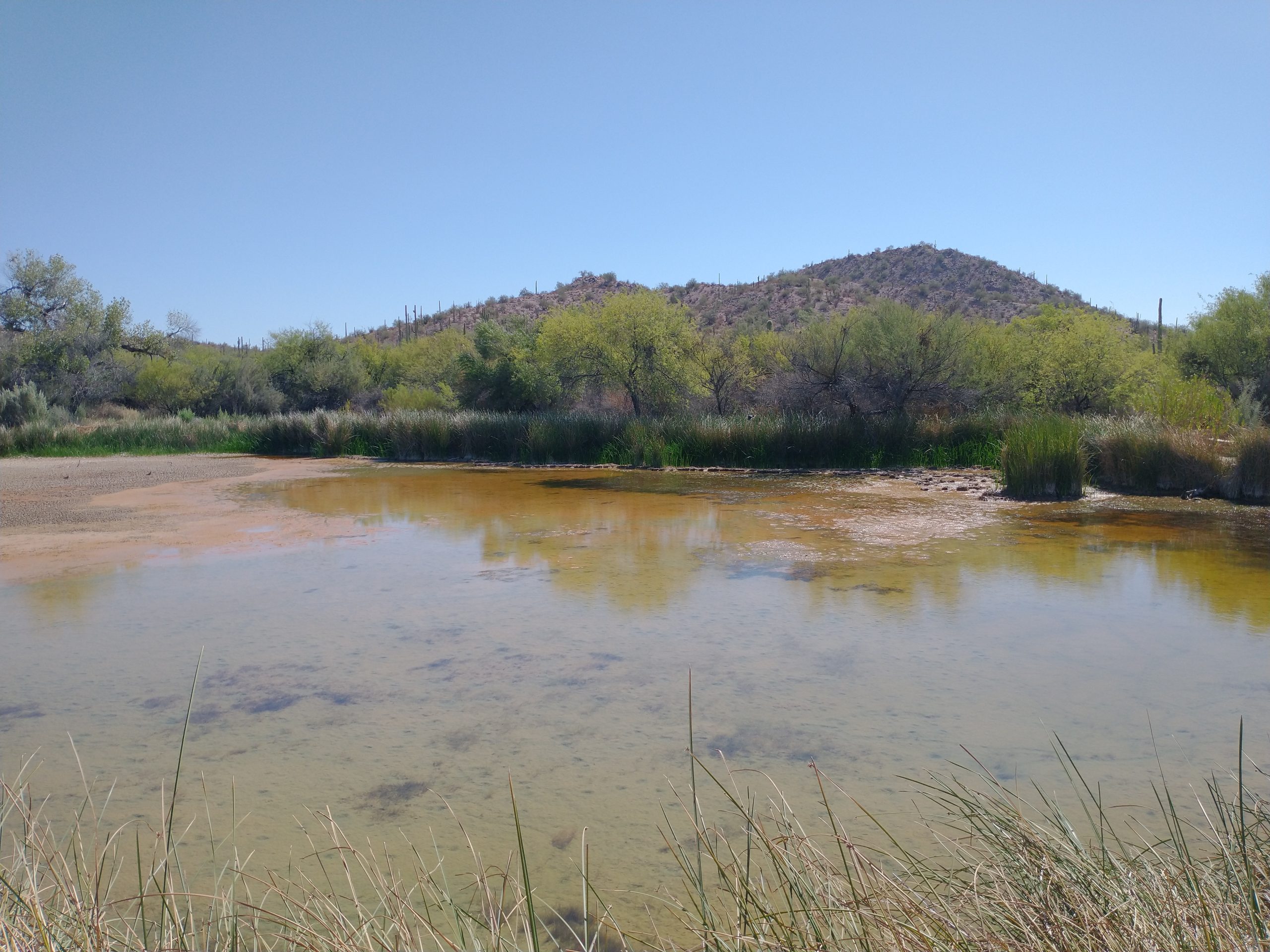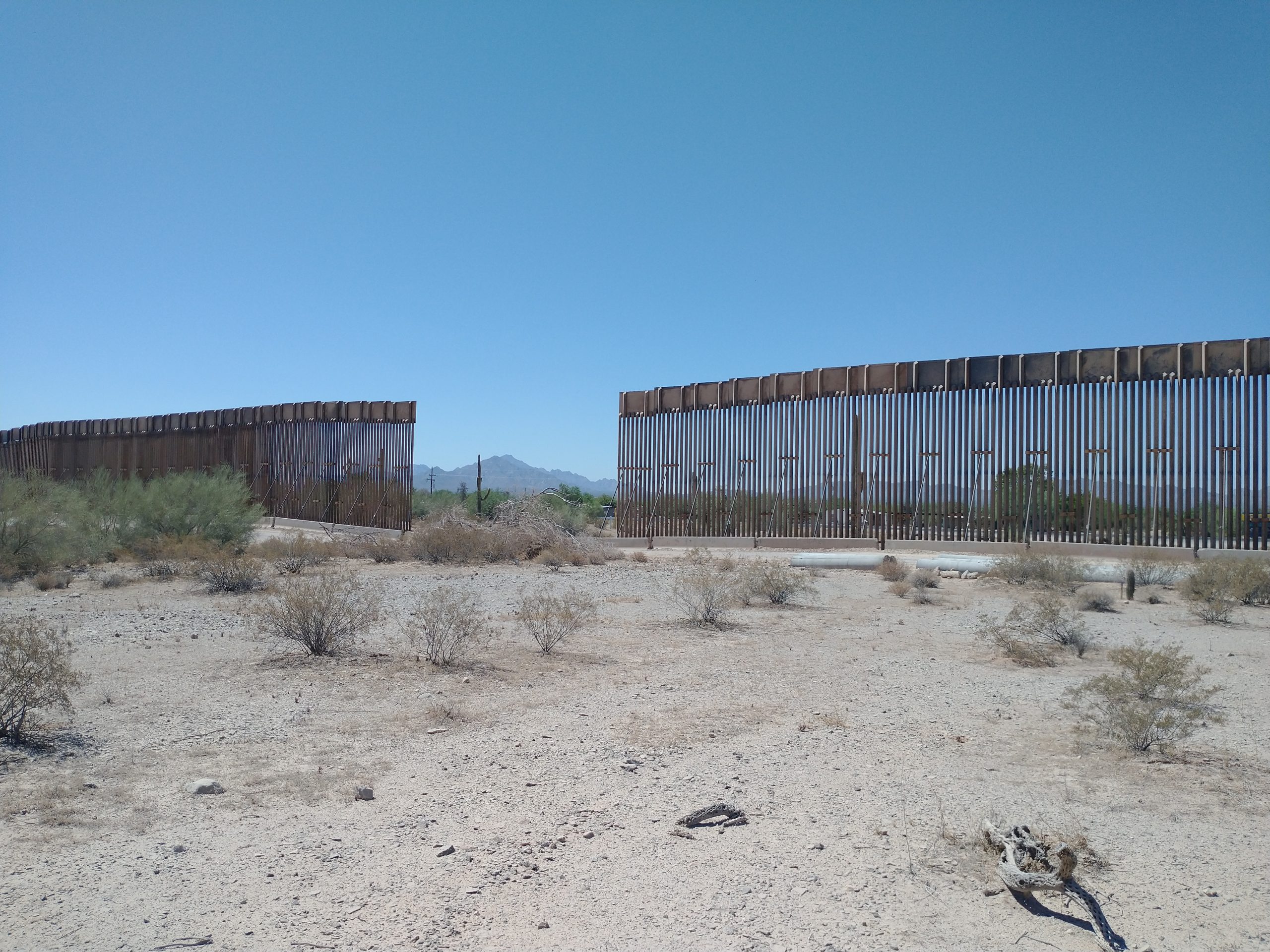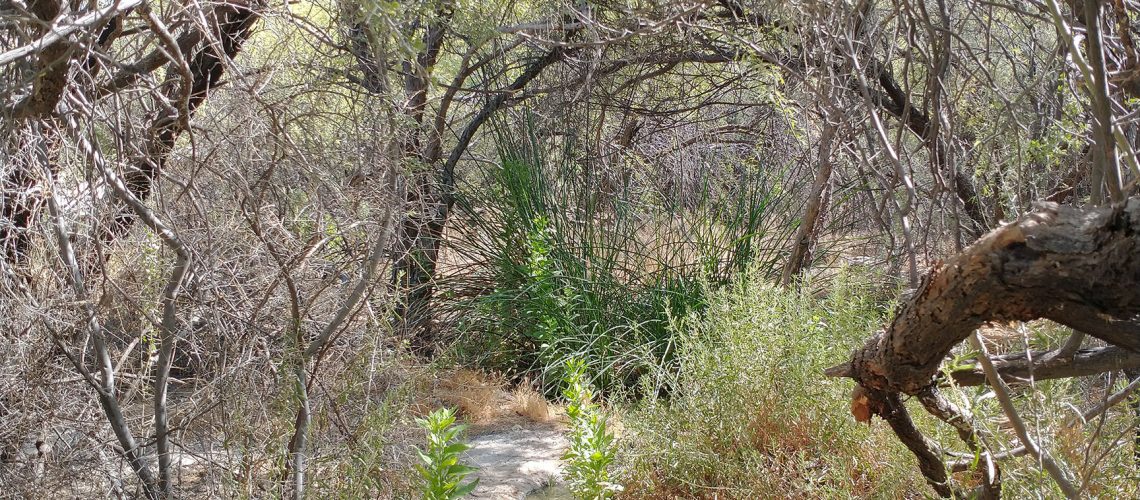Post by Rekha Warrier, Post Doctoral Fellow at the School of Global Environmental Sustainability

The Sonoran Desert is a land of foreboding beauty straddling the southwestern margins of the United States. It’s a landscape of jagged peaks, cinder cones, valleys, and canyons molded by fiery volcanoes of eons past and howling winds from the Pacific coast. Like any other desert, the earth here betrays no signs of nourishment. Yet, it has for millennia been animated by a rich diversity of species and peoples. The desert nurtured, and has in turn been nurtured by, the enduring culture of the O’Odham, Hopi, and Zuni people whose ancestors came to this desert homeland almost 8000 years ago1. Today, their ancient salt trading trails meander past giant saguaro and organ pipe cacti that rise skyward from the parched earth. They stand amidst beds of vibrant brittlebush, creosote, barrel cacti, and prickly pears. This greenery, in turn, sustains species such as Sonoran pronghorn, desert bighorn sheep, and desert tortoises. Roving bands of Harris hawks and coyotes, prowling mountain lions, and roadrunners make up the apex of this food pyramid propped up on 10 inches of annual rain. Amidst all this improbable vibrance, live three impossible animals: a fish, a turtle, and a snail. These aquatics obligates survive in their last remaining secure home in the U.S., the half-acre-wide oasis and spiritual wellspring of the O’Odham peoples – Quitobaquito Springs.
Quitobaquito springs and the resulting oasis lie in Organ Pipe Cactus National Monument, within earshot of the U.S. – Mexico border. Here, cool water gushing out from a fault in the granite flows into a wide and shallow pool surrounded by lush vegetation. A hundred and fifty years ago, and perhaps for thousands of years prior to that, the spring waters fed one among a series of perennial rivulets draining into the Sonoyta River in nearby Mexico. Populations of the Quitobaquito pupfish (Cyprionodon macularius), the Sonoyta mud turtle (Kinosternon sonoriense longifemorale) and Quitobaquito spring snail (Tryonia quitobaquitae) occurred within the Sonoyta River and the numerous springs and ephemeral streams draining into it2. The pupfish is a tiny fish species adapted to the high salinity and temperatures of desert waters. In the breeding season, the male pupfish develop an iridescent indigo color and defends territories within which the females lay eggs. It feeds on algae, insects, and (for an Endangered species) ironically, on its own eggs. The seven-inch-long Sonoyta mud turtle, and the pinpoint-sized Quitobaquito spring snail also feed on tiny aquatic vegetation and are endemic to the Rio Sonoyta basin. In desert environments, physiological adaptations enable species to survive the extreme rarity of water. This however is not the case for the pupfish, the mud turtle and the spring snail, whom evolution has condemned to live by the caprices of a river system in the heart of the Sonoran Desert. Over time, the Sonoyta river drifted away from Quitobaquito, leaving the rivulet to drain into the desert. Other rivulets draining into the Sonoyta were consumed by towns, roads and the desert. In the late 1800’s the area around Quitobaquito was settled and the rivulet was dammed to help irrigate an orchard3. Thus, with the displacement of a little bit of earth, the three species quietly slipped into a century and a half of solitude.
For our planet that is billions of years old, a hundred and fifty years, perhaps has the same import that a single second does in our lives today. But for us, the arc of history that connects 1860 and 2020 spans many distinct epochs and now, two disquietingly similar pandemics. In this span of time, we fought wars, we fought the war to end all wars and then, started again at the beginning. In the last hundred and fifty years we saw the end of colonialism and the remaking of colonialism; we envisioned all humans as equal, and then retrofitted racism into every sphere of civil life; we harnessed the terrible power of the sun to destroy cities, and then forgot to marshal its soft rays towards more benevolent ends. In 1856, Eunice Foote, an American scientist, shattered stereotypes when she presented her findings on the warming potential of carbon dioxide gas at a U.S. science conference. In 2020, women in science continue to dismantle the stereotype that carbon dioxide accumulation in our atmosphere is not warming our planet. For a century and a half, we watched the steady accumulation of climate warming gases in our atmosphere, and the equally steady trickle of reports warning that world’s poor are running out of time. In this length of time, the landscape around Quitobaquito also changed. Many springs and rivulets associated with the Rio Sonoyta basin and along with it, populations of pupfish, mud turtles and spring snails disappeared. The Sonoran Desert transformed from a seamless cultural landscape into a portal, spanning the ever-widening chasm between despair and hope. Waves of people, leaving behind beloved homes, besieged by violence and poverty continue to slip into this perilous portal in the hope of finding a new beginning. Today, the Sonoran soil is as much volcanic dust, as it is the bleached memories of children, mothers, fathers, brothers and sisters who never made it home4.

This year, as always, summer in the Sonoran Desert arrived on the wings of the lesser long-nosed bats. The bats travel between the Sonoran and Chihuahuan Deserts, between Mexico and the US, tracking the bounty of flowers and fruits crowning saguaro, organ pipe, and senita cacti and agave. As summer temperatures surge past new records, the pool at Quitobaquito has begun to recede, leaving cracked and dry earth in its wake. Water output from the spring, assiduously monitored by the National Park Service, has been dipping steadily all summer and is now at an all-time low. If the water level drops further, drastic measures might be needed to rescue the species. A stone’s throw away from the oasis, construction is being completed on a 30-feet-tall and miles long, national monument to fear. It stands where hundred-year-old cacti once stood; where the Quitobaquito spring once gingerly made its way to the Sonoyta River and on lands where the O’Odham peoples honor their ancestors. Every day, giant machines rumble over sensitive desertscape and mix concrete for construction, with water drawn from ancient, fragile and finite aquifers in the desert. A causal link between the upward and onward surge of the Border Wall and the desiccation of Quitobaquito has been suggested, but has not been conclusively established. If ultimately this causal link doesn’t exist, then does it mean that siphoning off the scarcest resource in a desert ecosystem is conscionable? Then again, what would the establishment of this causal link ultimately mean for this serendipitous oasis in a world marked by new vagaries?

In the Sonoran Desert, rain arrives in two distinct spells. The winter rains are gentle events that transform the desert into a garden of wild flowers. The summer rains on the other hand are tempestuous affairs. The desert heat draws in the wild westerlies from the Pacific Ocean, which form darkly ominous thunderheads. When they release their moisture, they do so with a force that transforms dry river beds into raging torrents in a matter of minutes. As dark clouds suffuse the late summer sky in the Sonoran Desert, it seems like the last secure home of the pupfish, the mud turtle and the snail may yet persist. The very forces that make droughts more frequent in this part of the world, are also making the summer rains more ferocious5. The pool may overflow, the Wall may fall.
- https://www.nps.gov/cagr/learn/historyculture/the-ancestral-sonoran-desert-people.htm
- https://www.fws.gov/endangered/bulletin/2003/05-06/22-23.pdf
- https://theconversation.com/trumps-border-wall-threatens-an-arizona-oasis-with-a-long-diverse-history-120730
- https://www.rollingstone.com/politics/politics-features/border-crisis-arizona-sonoran-desert-882613/
- https://www.climatecentral.org/news/warming-fueling-arizonas-monstrous-monsoons-21679






